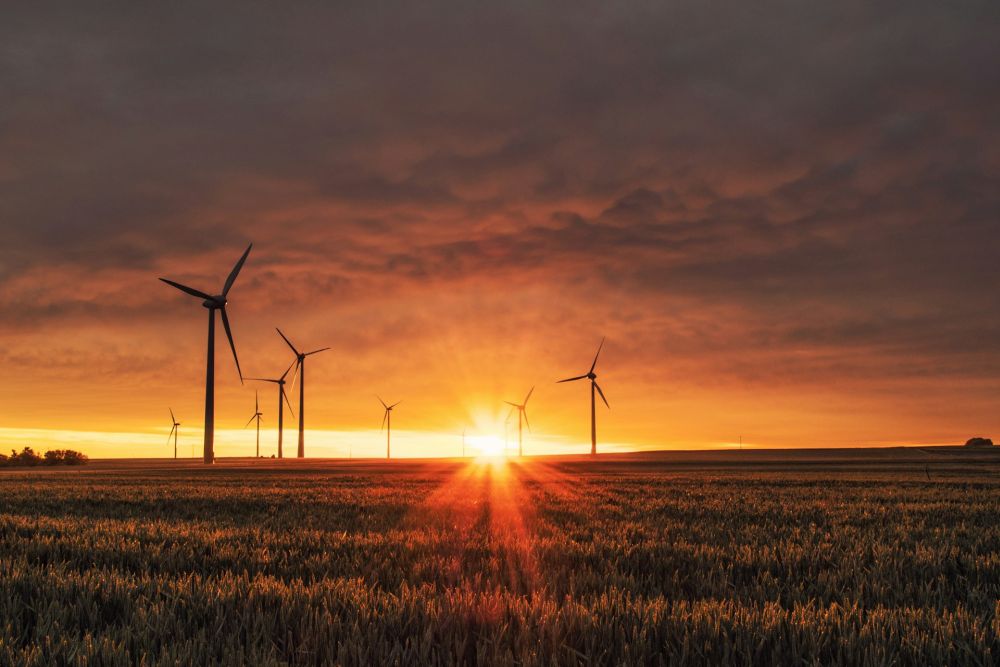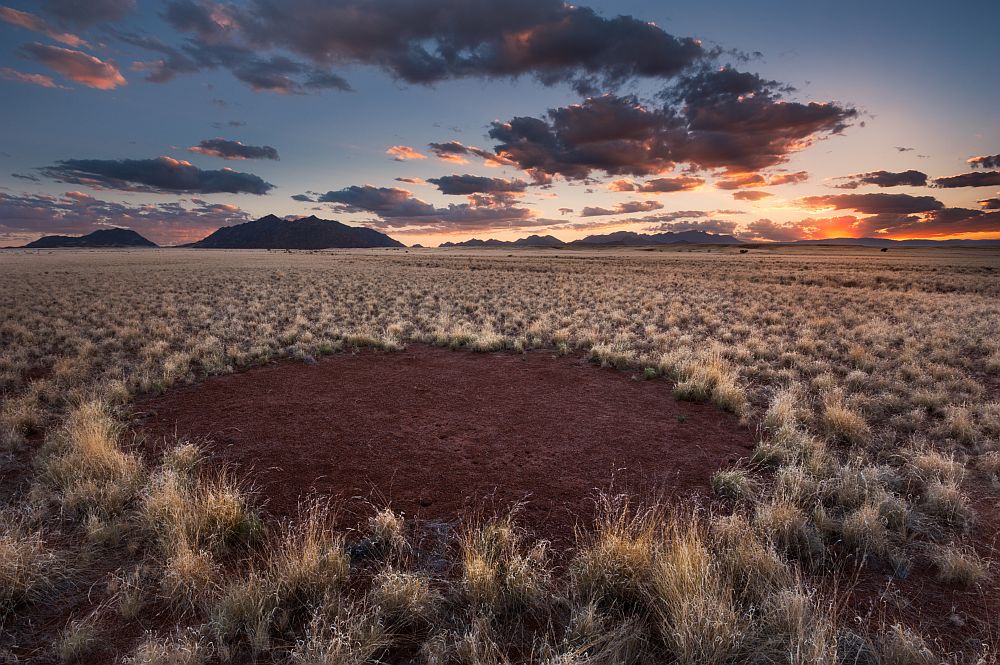
[Image above] A new dawn is rising on the energy economy, with renewable and clean energy projects experiencing record growth even in the face of some regional opposition. Credit: Karsten Würth, Unsplash
After several months of finalizing data, the results are in—2024 was unequivocally the year of renewables.
Global renewable energy capacity grew by a record-breaking 15.1% in 2024, according to the International Renewable Energy Agency, accounting for 92.5% of total power capacity expansion last year. This growth, along with large-scale decommissioning of fossil fuel power plants in several regions, allowed renewables’ share of global installed power capacity to rise from 43% to 46.4%.
Despite these gains, the industry is still slightly behind the rate needed to deliver on the global goal to triple available renewable energy by 2030. Accomplishing this goal would require an annual growth of 16.6% until 2030, according to the International Renewable Energy Agency.
Fortunately, more and more countries are releasing or updating national energy roadmaps to help guide their transition to a clean energy economy. Some roadmaps announced in the past year include
- March 2024: Mozambique published the Just Energy Transition Strategy, which is focused on four pillars: modern energy systems based on renewable energy sources, green industrialization, adoption of clean energy transport, and universal access to modern energy.
- June 2024: Pope Francis announced measures to transition Vatican City to using solar energy as its main source of electricity. Upon completion, the Vatican will join seven other countries to generate more than 99.7% of their electricity from renewables.
- July 2024: Uruguay published the Roadmap for Green Hydrogen and Derivatives, which describes the country’s strategy to reach a production of 1 Mt/year of green hydrogen by 2040. (Full text) Meanwhile, Kazakhstan adopted the National Infrastructure Plan until 2029, which aims to have renewable energy sources account for 12.5% of the country’s total energy production by that time.
- August 2024: Brazil launched the National Energy Transition Policy, which will help articulate and coordinate the energy transition in Brazil. (Overview) Meanwhile, Panama published two roadmaps aimed at reducing methane and black carbon emissions. (Full text: Methane Roadmap for Panama and Roadmap for the Mitigation of Short-lived Climate Pollutants in Panama) Over in the Middle East, Israel’s Ministry of Energy and Infrastructure published a roadmap for net-zero emissions by 2050, and the roadmap describes three scenarios for achieving the goal.
- September 2024: With support from the European Commission and the World Bank Group, Romania published the Offshore Wind Roadmap for Romania to help realize the vast potential of offshore wind in Romania. (Full text) Meanwhile, during the Roadmaps to New Nuclear 2024 conference in Paris, France, government representatives from 21 countries released a communiqué highlighting their commitment to nuclear technology and pledging to work together to fully unlock its potential. (Full text) Over in South America, Decree No. 2.553/24 came into effect in Paraguay, establishing a new energy policy to reduce the country’s dependency on hydrocarbons and align with global energy transition efforts. And in the Middle East, several key institutions led by the Kuwait Foundation for the Advancement of Sciences prepared a comprehensive energy transformation white paper to serve as the country’s first energy transition roadmap. (Executive summary)
- October 2024: Türkiye unveiled the 2035 Renewable Energy Roadmap, which aims to quadruple the country’s wind and solar capacity to 120 GW over the next decade. (Overview)
- November 2024: The Republic of Maldives launched the updated Energy Sector Road Map for 2024–2035 at the United Nations Framework Convention on Climate Change. The roadmap outlines a plan to have renewable energy make up 33% of the country’s electricity sector by 2028. (Full text)
- January 2025: Nepal approved the Energy Development Roadmap and Working Guideline, which aims to generate 28,500 MW of electricity in the next decade via mainly hydropower projects.
- February 2025: After releasing a draft version in June 2024, the Republic of Korea finalized its 11th Basic Plan for Long-Term Electricity Supply and Demand, which outlines energy supply and generation strategies through 2038. Under the new plan, the country will build three additional nuclear reactors by 2038, raising nuclear power’s share of the energy mix to 35.2%. The country also unveiled the Offshore Wind Power Competitive Bidding Roadmap in August 2024. Meanwhile, Rwanda unveiled a new energy policy, which updates the 2015 policy to account for emerging challenges and realities as well as technological developments in the energy sector.
- March 2025: Laos approved the Lao PDR National Green Hydrogen and Ammonia Roadmap, which aims to deliver opportunities for decarbonized hydrogen and ammonia. (Full text)
- April 2025: South Africa approved the South African Renewable Energy Masterplan, a roadmap to boost energy security and industrial development planning to increase its renewable capacity by up to 5 GW annually. (Full text) Meanwhile, Vietnam approved the amended Power Development Plan VIII (PDP8), which not only boosts the share of renewable energy in the plan but now also includes nuclear power. (Overview of original plan)
The European Commission is also working on a strategy to phase out Russian oil and gas imports. The plan was initially due out in March 2025, but the Commission delayed the plan’s release as it weighs the impact of the U.S. administration’s pivot on Ukraine.
Speaking of the U.S., recent federal policy changes targeting funding and support for renewable energy projects has caused much concern among scientists in the country. However, even if President Donald Trump successfully repeals environmental regulations and slashes green subsidies, the shift to clean energy in the U.S. will persist, according to outlooks from the U.S. Energy Information Administration and BloombergNEF published in April 2025.
Author
Lisa McDonald
CTT Categories
- Energy
- Market Insights
Related Posts
‘Fairy circles’ may help mark natural underground hydrogen deposits
September 18, 2025

